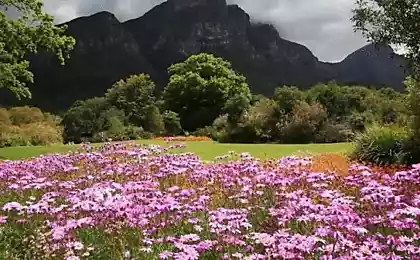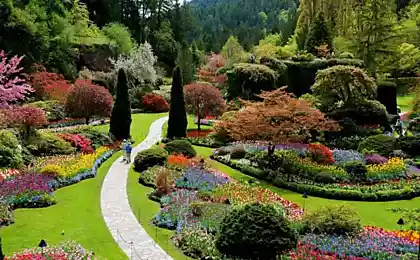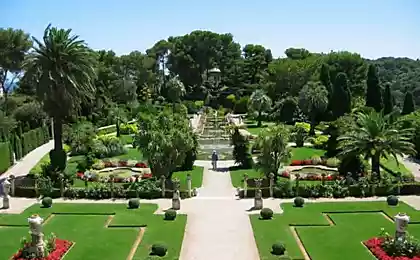1392
Chinese style gardens

In the history of landscape architecture occupies a special place art of the East. In China, for a long time to develop in isolation from the rest of the world, has formed a unique garden tradition. history of Chinese gardens has three thousand years and includes gardens emperors, gardens scholars and poets. Ancient Chinese gardens did not survive, but to have survived their descriptions and images, which clearly shows the indispensable elements of Chinese gardens - pond, mountain, pavilion and plants. The basis of Chinese tradition gardens lay the legend of the eight Taoist immortals who lived on the top Penlay. Mountain was one of the three islands in the sea between Japan and Korea. Surrounded by a garden paradise, immortals lived in precious palaces, ate fruit, giving immortality.
Period of the Tang Dynasty (618-907 years) is considered the first golden age of Chinese gardens. On the composition and the idea of gardens have influenced art and poetry, also reached the highest level at this time. The gardens have a complex structure and numerous architectural structures, reservoirs for walks in boats and a rich collection of plants, including rare and exotic items.
Chinese Garden opens its views sequentially, as well as unfolding in front of the viewer scroll painting. At relatively small size of the Chinese garden is characterized by sophistication, richness artistic images, asymmetry.
Numerous pavilions and galleries were created for admiring nature in any weather. In the gardens of the central structure of the scientists was the library or training room. Poetic names pavilions talk about their mission: Pavilion five mountain peaks; Pavilion lotus breeze; terrace light rain brings freshness. Terraces often did zigzag, it was believed that it prevents the penetration of evil spirits. Of great importance was the shape of windows and doors, they can be round ("moon gate"), or octagonal-shaped gourd. Town halls, lodges carefully considered in accordance with the movement of qi energy.
Stones in the Chinese gardens
An integral part of Chinese classical gardens - stones. Born nature, they are revered as works of art. Mountain top in Chinese philosophy - a symbol of virtue, strength, permanence. Certain stone could symbolize the mountain peak, and a number of stones - a mountain range. "Pick up stones and place them in a stream ought wisely, searching for each rightful place. One boulder should reveal the beauty of a thousand peaks "(Wen Chzhenhen" of things to delight the eye. "Translated by Malyavina).
Lake or pond play an important symbolic role in the Chinese garden; "The stones evoke thoughts of the ancient. Water evokes thoughts of distant. In the home garden can not do without stones, bordering "(ibid). In addition to direct visual effect water associated with the philosophical concepts of Taoism and Confucianism.
Elaborately planned pond even in a small garden located so that its opposite shore hidden, prompting the viewer to long walks in the garden. "Borrowed landscape", ie landscape, located outside the garden, but the visible viewer allows you to expand the limits of the garden mentally to the horizon.
Plants are usually referred to the last among the elements of a Chinese garden, but that does not mean that they play a subordinate role. If the static structure and stones, water, trees, flowers vary from time to time, showing a fickle phenomena of life. Plum, pine and bamboo - favorite plants in the Chinese gardens and painting. Pine - a symbol of permanence, bamboo - wisdom and fortitude, sliva- rebirth of nature after winter. Special love surrounded in China peonies and lotuses.























